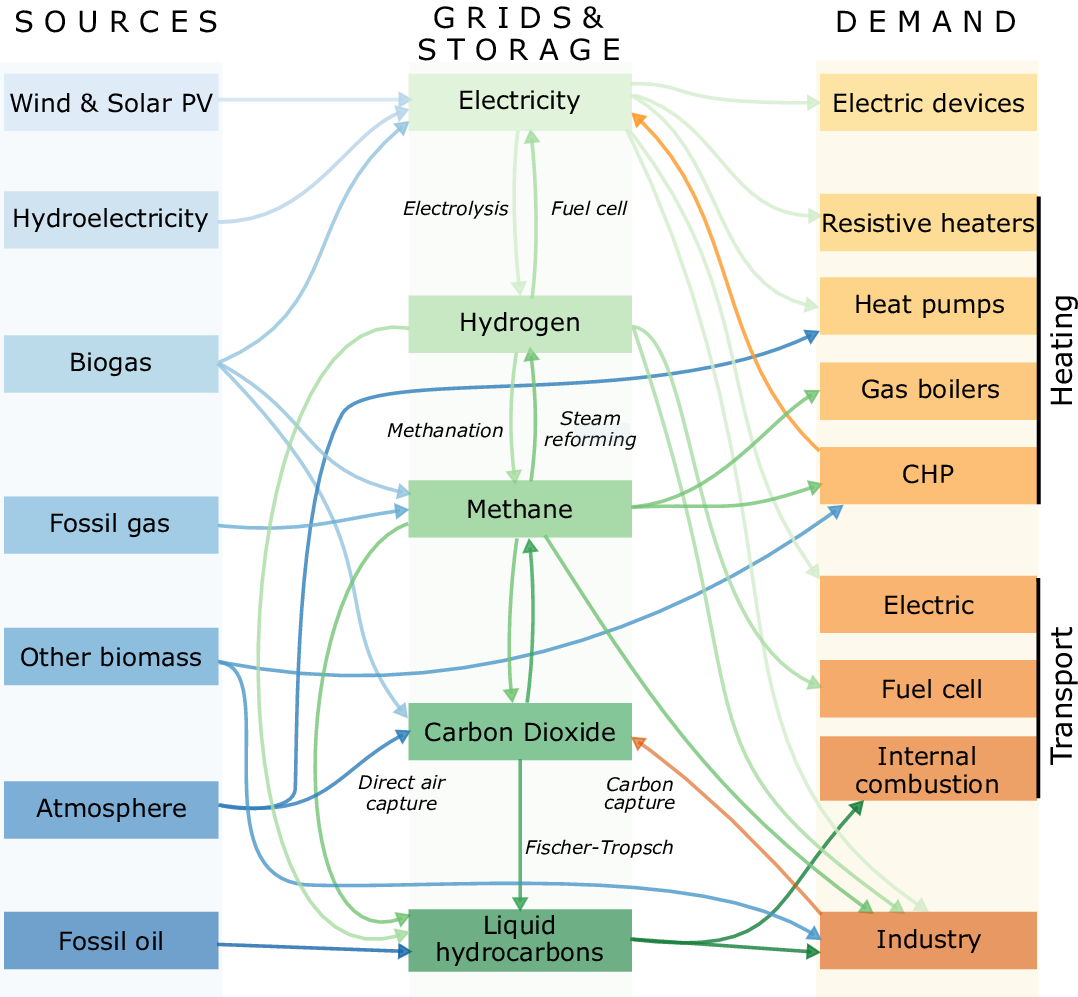This was handled before in industry_sector_ratios.csv which was confusing. Now industry_sector_ratios.csv represents the genuine energy consumption per tonne of material for each industrial route (MWh/tMaterial). An new file is created with ktMaterial/a in industrial_production_per_country_tomorrow.csv which contains changes to the fraction of primary/secondary routes compared to today's production in industrial_production_per_country.csv. This is less confusing I think. |
||
|---|---|---|
| data | ||
| doc | ||
| graphics | ||
| scripts | ||
| .gitignore | ||
| config.default.yaml | ||
| config.myopic.yaml | ||
| LICENSE.txt | ||
| README.md | ||
| Snakefile | ||
PyPSA-Eur-Sec: A Sector-Coupled Open Optimisation Model of the European Energy System
WARNING: This model is under construction and contains serious problems that distort the results. See the github repository issues for some of the problems (please feel free to help or make suggestions). There is neither documentation nor a paper yet, but we hope to have a preprint out by summer 2020. We cannot support this model if you choose to use it.
PyPSA-Eur-Sec builds on the electricity generation and transmission model PyPSA-Eur to add demand and supply for the following sectors: transport, space and water heating, biomass, industry and industrial feedstocks. This completes the energy system and includes all greenhouse gas emitters except waste management, agriculture, forestry and land use.
Please see the documentation for installation instructions and other useful information.
This diagram gives an overview of the sectors and the links between them:
PyPSA-Eur-Sec was initially based on the model PyPSA-Eur-Sec-30 described in the paper Synergies of sector coupling and transmission reinforcement in a cost-optimised, highly renewable European energy system (2018) but it differs by being based on the higher resolution electricity transmission model PyPSA-Eur rather than a one-node-per-country model, and by including biomass, industry, industrial feedstocks, aviation, shipping, better carbon management, carbon capture and usage/sequestration, and gas networks.
PyPSA-Eur-Sec includes PyPSA-Eur as a snakemake subworkflow. PyPSA-Eur-Sec uses PyPSA-Eur to build the clustered transmission model along with wind, solar PV and hydroelectricity potentials and time series. Then PyPSA-Eur-Sec adds other conventional generators, storage units and the additional sectors.
Licence
The code in PyPSA-Eur-Sec is released as free software under the GPLv3, see LICENSE.txt. However, different licenses and terms of use may apply to the various input data.



